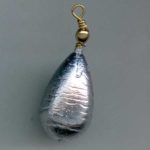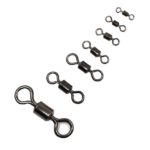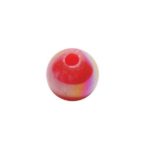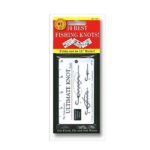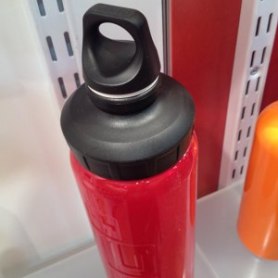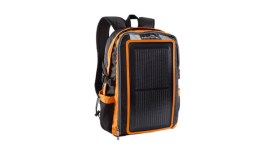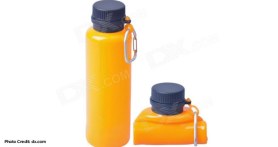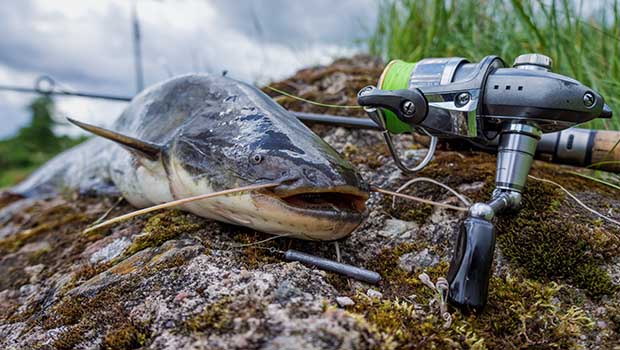

There are so many tackle rigs to catch catfish, deciding which to use can be confusing for a beginning angler. Here’s one of the simplest to cover a wide range of fishing situations.
Videos by Outdoors with Bear Grylls
Thread the line from your rod through the eye of a 1-2 ounce bell sinker. The less current, the lighter the sinker. Where there’s a lot of current you may need even more weight.
Next, slide a small plastic bead onto the line. Then tie a barrel swivel to the end of the line.
Tie another piece of monofilament line about 18-24 inches long to the other end of the barrel swivel. Then tie your hook to the opposite end of the line.
Bait up, and your ready to catch catfish.
More Tackle Tips
You’ll hear that catfish are “bottom feeders.” That’s sort of true. They will sometimes eat off the bottom, but prefer bait anywhere from a few inches to a couple feet off the bottom. To get your bait to float up a little bit, you can use floating jig heads like walleye anglers use … or use a foam packing peanut or two. Just cut a slit in the peanut and put it on the line between the bait and the barrel swivel. The closer the peanut(s) are to the bait the farther from the bottom it will float.
Catfish love to feed at night so a lot of catfishing is done then. Sometimes it’s so dark it’s hard to see the rod tip jiggle or the line move when a fish bites. A Styrofoam peanut also makes a great strike indicator.
For bank fishing, cast out and let the sinker settle to the bottom. Then reel in the line until you feel it get taut with the sinker. Wrap a rubber band tightly around the rod handle. Set the rod in a forked stick and open the bail or turn off the lock while holding the line so it doesn’t escape. Pull gently back on the line and loop a little bit between the rubber band and the rod.
Cut a slit in a white Styrofoam peanut and put it on your line a couple inches beyond the rod tip. When a fish tugs at the line, it will pull the line from underneath the rubber band and the peanut will move toward the water. Because it’s so white, you’ll easily see it moving or fall off the line. Pick up your rod and set the hook!
Everything You Need For the Basic Catfish Rig
JSHANMEI Circle Hook Selection
150 hooks may seem like a lot for starting out, but getting a selection like this ensures you’ll have exactly the size you need for the size of catfish you’re after. And you’re always going to lose some hooks along the way to snags, rocks, etc. You’ll be a lot happier with too many hooks rather than not enough when the fish are biting.
Berkley Trilene Fishing Line – 17 lb.
Catfish live in some mighty deep and tough cover at times, and they can grow BIG. You will be ready for either if you select a quality, extra-tough fishing line. There are lots of specialty types of line out there, but don’t get confused. It’s easiest to stick with monofilament. Go with a weight from 14-20 pounds. 17 is a good middle ground for catfishing.
You need to get your bait near the bottom to catch catfish consistently. Exactly how much weight you’ll need depends on the amount of current and if you’re fishing in one spot or drifting in a boat. However a good starting point is a 1 ½ ounce bell sinker. This is a 10 pack, so you’ll have spares when those nasty snags grab your sinker.
The barrel swivel serves two purposes in the basic catfishing rig. First it prevents the sinker from going all the way to your bait so that the bait will float from a few inches to a couple feet off the bottom, depending on how much leader you have. Second, it prevents your line from twisting as the bait sways in the current or as you drift.
By putting a bead on the line between the sinker and the barrel swivel, you prevent the brass metal loop on the sinker from smashing your carefully tied knot between them. That keeps the line at its full strength when it’s time to battle a big catfish. Besides, the color red attracts fish, so a red bead enhances the appeal of your whole rig.
Fisherman’s Ultimate Knot Guide
Using the right knots and tying them properly is one of the most essential skills in any kind of fishing, but it’s especially important when it comes to catfishing. These fish are tough, can grow big, and fight hard. They put stress on your line and knots, and you don’t want to tell the story of the big one that got away because of a bad knot.


